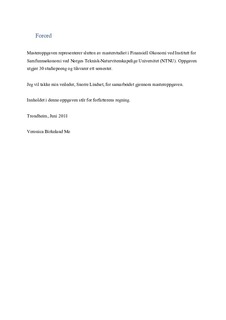Kan korrelasjonen mellom avkastningene til bransjeindeks og hovedindeks på Oslo Børs predikere avkastningen til OSEBX? Bruk av EGARCH-modeller til å predikere avkastning
Master thesis
Permanent lenke
http://hdl.handle.net/11250/2565378Utgivelsesdato
2018Metadata
Vis full innførselSamlinger
Sammendrag
The primary aim of this master thesis is to create models that can predict future index returns of the Oslo Exchange Benchmark Index (OSEBX). The independent variables are OSEBXs index returns from previous years, and correlations between eight different sector returns and the OSEBX return. The data is collected from Thomson Reuters Datastream and the area of examination is the Norwegian stock market. Indices of eight sectors from Oslo Stock Exchange (OSE) are used as variables representing the performance of each sector to predict the return of OSEBX. The purpose of creating these models is to determine whether certain sectors are more suited for forecasting the return of OSEBX than the others.
This thesis focuses on four extensions of the EGARCH(1,1)-model, and their ability to explain and predict OSEBXs returns and conditional variance. The extension is represented by the correlation between sectors returns and OSEBX return in the preceding period.
The main finding is that two sectors are better at predicting future index returns than the original EGARCH(1,1)-model. The extended models that are more effective at predicting future index returns include the correlation between the consumer goods sector return and the OSEBX return, and the correlation between the finance sector and OSEBX. Among the total of 32 models estimated in this thesis, none yielded solely significant results, similar to the original EGARCH(1,1)-model. Still, two models are more effective at predicting future index return than the original EGARCH(1,1)-model. However, the models portrayed in this thesis does not offer perfect predictions as they are still fairly uncertain and yields some exclusively significant results.
